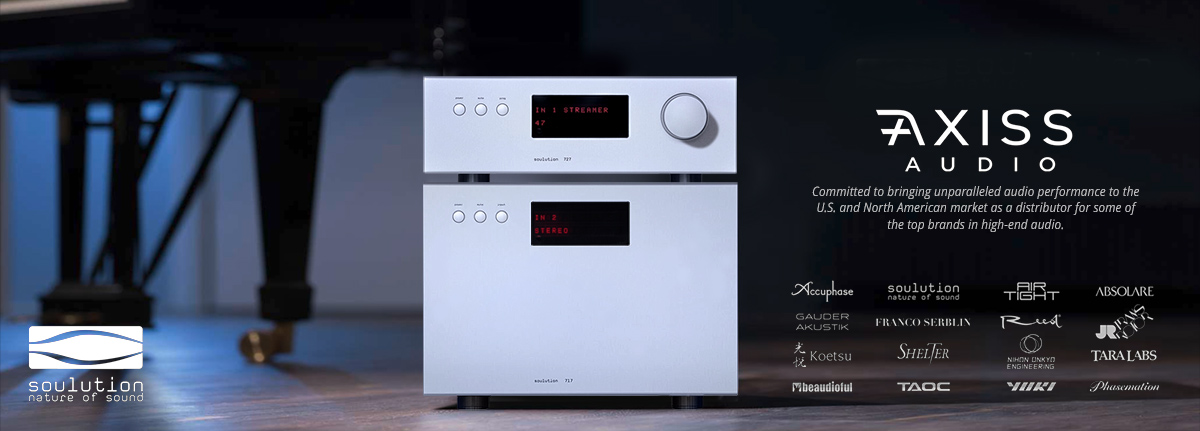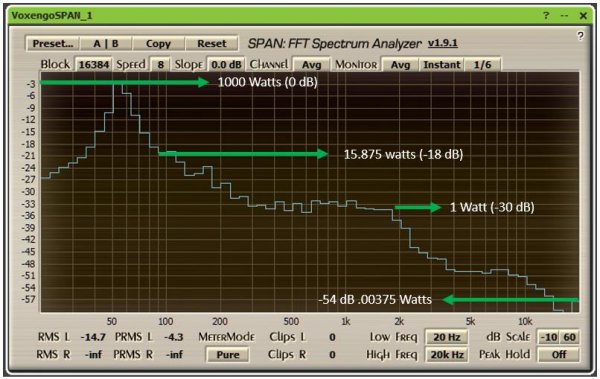This was a post from Paul McGowan of PS Audio last week about power requirements for treble vs bass. I kept it in the file and thought it might be relevant here.
"Paul McGowan <paul@psaudio.com> Unsubscribe
10:01 AM (3 hours ago)
One of the ever-interesting subjects a lot of us get confused with is tweeter power. If your amplifier outputs 1,000 watts and most tweeters can only handle maybe 50 watts max, how in the world is it more tweeters aren’t burned to a crisp?
The answer lies in the power distribution of music itself. Have a look at this analyzer’s output capturing some typical music.
Note how much power is needed for something like a kick drum at 50Hz (the bottom horizontal series of numbers denotes frequency) vs. even the 200 to 500Hz range where voices are. That’s a rather dramatic example of the uneven power distribution of music.
It takes a ton of energy to reproduce bass notes, but not a great deal as the scale goes upwards. Fact is, most tweeters never see more than a few watts.
It doesn’t matter how big your amplifier is when it comes to tweeters. A 1kHz capable amp still only outputs a few watts at tweeter frequencies when playing music."
View attachment 69045

















